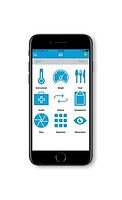Despite a lull in the incidence of E. coli O157:H7 food contamination over the last decade, recalls and outbreaks spiked in 2007 and continue into 2008. Dr. Richard Raymond, Under Secretary for Food Safety, announced in April that the cause of the "upward trend" in recalls, positive samples and human illness is unknown, but bold and strong initiatives are needed to "reverse the trends and protect public health."
To food manufacturers, processors and distributors, releasing quality product and preserving the well-being of consumers is of utmost importance. And on the business side, companies risk losing brand image and consumer confidence by releasing E. coli into the food supply. The impact on the food industry can be devastating, especially when recall consequences outweigh that of staying in business.
Most experts agree that one of the key pathways to preventing E. coli outbreaks is the early detection of the pathogen. To that end, Strategic Diagnostics has developed the RapidChek® SELECT for E. coli O157 that is fast, accurate, sensitive, reliable and actionable. This test will be a new addition to SDI’s Food Safety product line featuring the novel use of phage in the test.
This test can provide a broader picture of what is happening at every stage in a production facility, detecting problems such as inadequate hygiene practices or ineffective process interventions.
Rapid, easy and accurate results are noted among the top criteria upon which customers rely for their pathogen detection method decisions. In the current climate of increased budget constraints, they face another challenge: the cost of performing the test has become an increasingly important parameter for many operations in the food industry.
Solutions that Count
There are four factors to consider when choosing the right test for the detection of E. coli O157.
1. The test should detect O157 species, including H7.
All O157 species, including H7, should be able to be detected. Relying on products that merely test for H7 can be a costly mistake. A test result that is negative for E. coli means the food product is safe and can be immediately released. A positive result, however, means the product is potentially contaminated withE. coli O157:H7 and further analysis is needed to verify it. If the test is positive, but the H7-specific test is negative, the plant can then clean up their facility and prevent H7 contamination. If a plant has O157, it is simply a matter of time before an H7 strain is found. And if H7 is found, it is too late.
"Our test has the capability of providing facilities with early notification of contamination somewhere in the plant, and if they act quickly, they can avoid a much more serious problem," says Strategic Diagnostics CEO Fran DiNuzzo. "An H7 outbreak is a disastrous event," he adds, "and can involve government intervention, significant loss of profits and potential closing of plants, as well as mountains of paperwork and red tape."
2. The test should provide a phage-enriched media.
The test should be accurate, reliable, and have the ability to reduce the growth of competing bacteria that result in false negatives. By incorporating the use of highly selective bacteriophages that prevent background flora from outgrowing E. coli during the enrichment process, the test can provide high-quality results. In addition to the phage-enriched media, it can also be coupled to a next generation lateral flow test modified with monoclonal antibodies for enhanced reactivity.
3. The test should be simple, provide flexibility and have no hidden costs.
The test should be easy to use and not require expensive capital equipment or extensive operator training. It should be flexible so that the test can be incubated eight hours or left overnight for eighteen hours. In addition, there should be no need to use the sample preparation steps typically used in molecular methods and no requirement for a boiling step.
4. The test should provide fast results.
The enrichment and assay time should all be able to be performed in a single work shift, and a fast turn-around time helps move the meat or food product closer to market. Because of its ease of use, with a shorter time to result, the test should require no specialized training and no set ups or preparatory steps, providing a solution with at least 10% lower cost of use. By minimizing the risks of undetected and unaddressed E. coli contamination while delivering superior ROI across the entire meat and vegetable supply/value chain, the test will demonstrate its worth time and time again.
SDI’s RapidChek® SELECT for E. coli O157 test satisfies all these requirements, and is also right in step with the HACCP principles, particularly with a focus on preventing rather than detecting hazards.
"We understand that the reputation of individual companies is tied to the success of early detection of E. coli," says DiNuzzo. "That’s a heavy burden to carry," he adds, "and we believe Strategic Diagnostics can play a major role in providing complete solutions to our clients, solutions they can count on."
www.sdix.com
Complete Solutions, Safe Decisions


